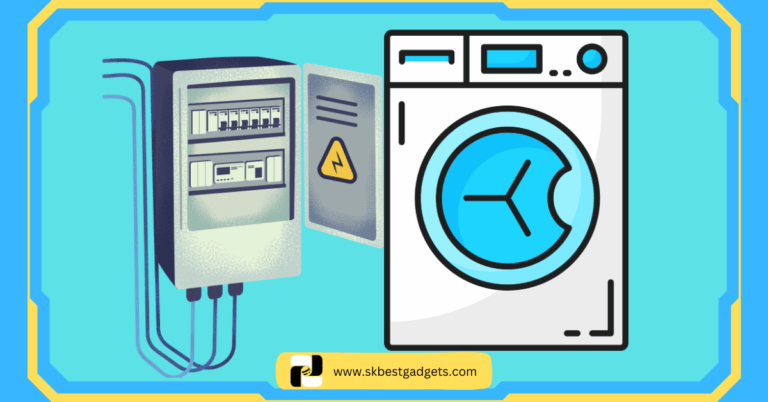Can a Dryer Overheat and Stop Working? (Updated 2023)

Ever wondered why your trusty dryer suddenly calls it quits, disrupting your daily routine? Can a dryer truly overheat and cease its operation?
If you’ve felt an unexpected surge of heat or noticed clothes remaining damp, you might be onto something. Unveiling the mystery of dryer overheating, we explore common issues from faulty components to ventilation hiccups.
The good news? This article is your guide to diagnosis and remedy. Count on us to unravel the complexities and provide actionable solutions, ensuring your dryer works efficiently. Trust our insights as we unravel the enigma of dryer troubles.
Key Takeaways
- Dryer Overheating: Yes, dryers can overheat, often due to heating element, thermostat, or lint trap issues.
- Warning Signs: Prolonged drying, damp clothes, and burning odor signal possible overheating.
- Safety Priority: If suspecting overheating, stop use immediately and consult a qualified technician.
- Common Causes: Lint buildup, faulty heating element, thermostat problems, and ventilation issues lead to overheating.
- Fixing Solutions: Clean the lint trap, check the thermostat for damage, and clear the dryer vent to avoid overheating.
- Preventive Steps: Preventive maintenance, proper loading, and attentive troubleshooting help prevent overheating.
- Visual Indicators: Burning smell, hot exterior, and prolonged drying times suggest overheating.
- Restart Delay: After overheating, the dryer may not restart right away due to safety mechanisms.
- Professional Help: Seek expert assistance if unsure about troubleshooting or recurring overheating.
- Efficient Dryer Practices: Regular maintenance, proper loading, and attentive troubleshooting keep the dryer efficient and safe.
Can a dryer overheat and stop working?
Yes, a dryer can overheat and stop working. This is usually caused by a problem with the dryer’s heating element, thermostat, or lint trap.
If your dryer is overheating, you may notice that it is taking longer to dry clothes, or that the clothes are not drying completely. You may also smell a burning odor coming from the dryer.
If you think your dryer is overheating, you should stop using it immediately and have it checked by a qualified technician. Overheating can be a serious safety hazard, and it can damage your dryer.
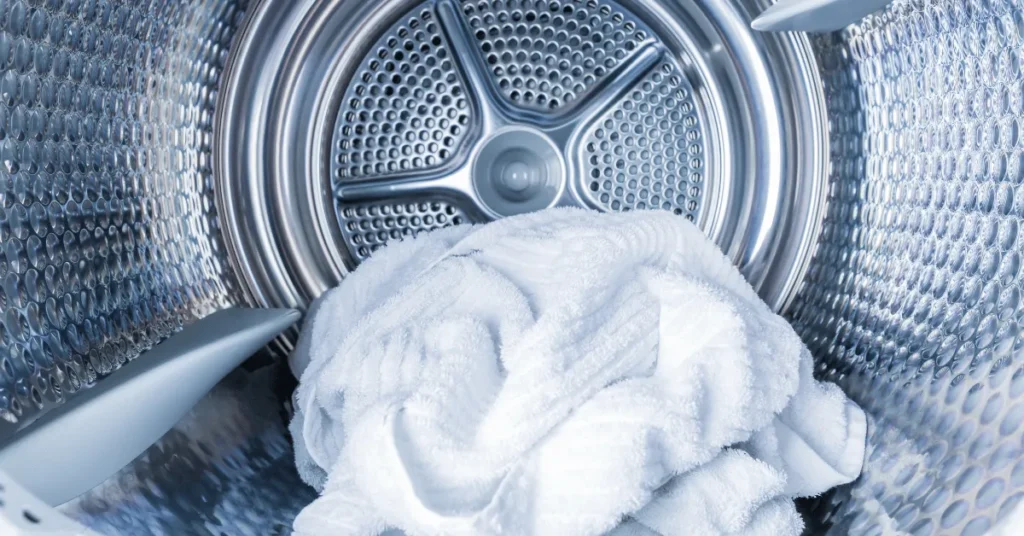
What are the reasons a dryer can overheat and stop working?
There could be so many reasons that can cause your dryer to overheat but there are some reasons that happen most with the dryers that make them overheat, well, below are some of them.
- Lint build-up: The most common cause of dryer overheating is lint build-up. Lint can block the airflow in the dryer, causing the temperature to rise. To prevent this, it’s important to clean the lint trap after every use.
- Faulty heating element: The heating element in the dryer is responsible for heating the air. If the heating element is faulty, it can overheat the dryer.
- Thermostat problem: The thermostat in the dryer is responsible for regulating the temperature. If the thermostat is not working properly, it can cause the dryer to overheat.
- Ventilation problems: The dryer vent is responsible for removing the hot air from the dryer. If the vent is blocked or clogged, it can cause the dryer to overheat.
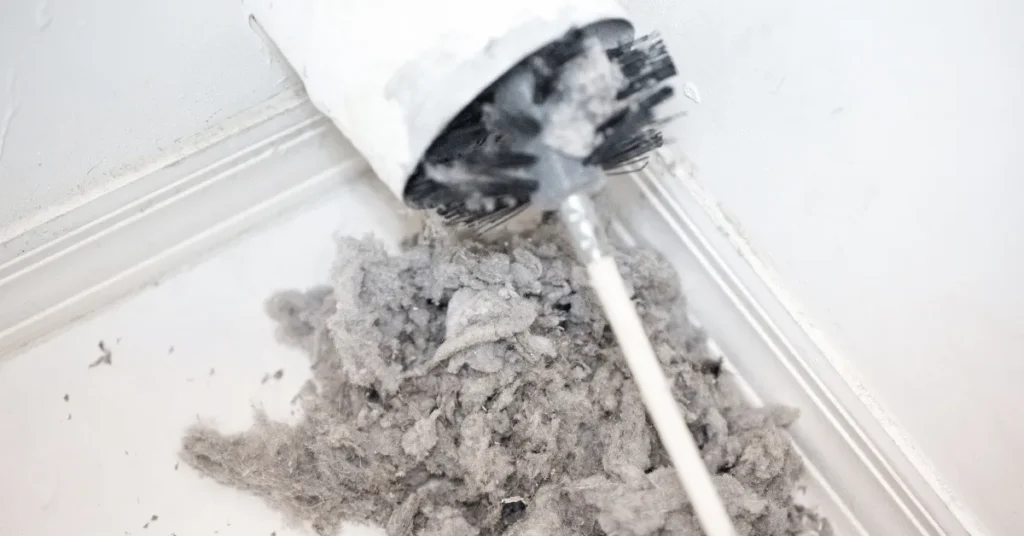
If you think your dryer is overheating, you should stop using it immediately and have it checked by a qualified technician. Overheating can be a serious safety hazard, and it can damage your dryer.
How do you fix an overheated dryer?
A dryer that overheats can be a serious safety hazard, so it’s important to fix the problem as soon as possible. Here are some steps you can take to fix an overheated dryer:
- Check the lint trap. The most common cause of dryer overheating is lint build-up. Make sure to clean the lint trap after every use.
- Inspect the heating element. The heating element is responsible for heating the air in the dryer. If the heating element is faulty, it can overheat the dryer. You can inspect the heating element for signs of damage, such as cracks or breaks.
- Check the thermostat. The thermostat is responsible for regulating the temperature in the dryer. If the thermostat is not working properly, it can cause the dryer to overheat. You can check the thermostat for signs of damage, such as loose connections or broken wires.
- Clean the dryer vent. The dryer vent is responsible for removing the hot air from the dryer. If the vent is blocked or clogged, it can cause the dryer to overheat. You can clean the dryer vent with a vacuum cleaner or a dryer vent cleaning kit.

If you’ve checked all of these things and your dryer is still overheating, you may need to call a qualified technician to repair the dryer.
Here are some additional tips to help prevent your dryer from overheating:
- Use the dryer’s moisture sensor setting. This setting will help prevent overdrying, which can lead to overheating.
- Don’t overload the dryer. Overloading the dryer can prevent the air from circulating properly, which can lead to overheating.
- Avoid using dryer sheets. Dryer sheets can leave a residue on the lint trap, which can trap lint and cause the dryer to overheat.
By following these tips, you can help prevent your dryer from overheating and keep your clothes safe.
Will my dryer turn back on after overheating?
If your dryer overheats, it may not turn back on right away. This is because the dryer’s safety mechanism will shut it down to prevent a fire. The safety mechanism will usually reset itself after a few minutes, and the dryer will then turn back on.
However, if the dryer overheats again, it may not turn back on at all. This is because the safety mechanism may have been damaged, and it will need to be repaired by a qualified technician.
Here are some reasons why your dryer might overheat:
- Lint build-up: The most common cause of dryer overheating is lint build-up. Lint can block the airflow in the dryer, causing the temperature to rise. To prevent this, it’s important to clean the lint trap after every use.
- Faulty heating element: The heating element in the dryer is responsible for heating the air. If the heating element is faulty, it can overheat the dryer.
- Thermostat problem: The thermostat in the dryer is responsible for regulating the temperature. If the thermostat is not working properly, it can cause the dryer to overheat.
- Ventilation problems: The dryer vent is responsible for removing the hot air from the dryer. If the vent is blocked or clogged, it can cause the dryer to overheat.
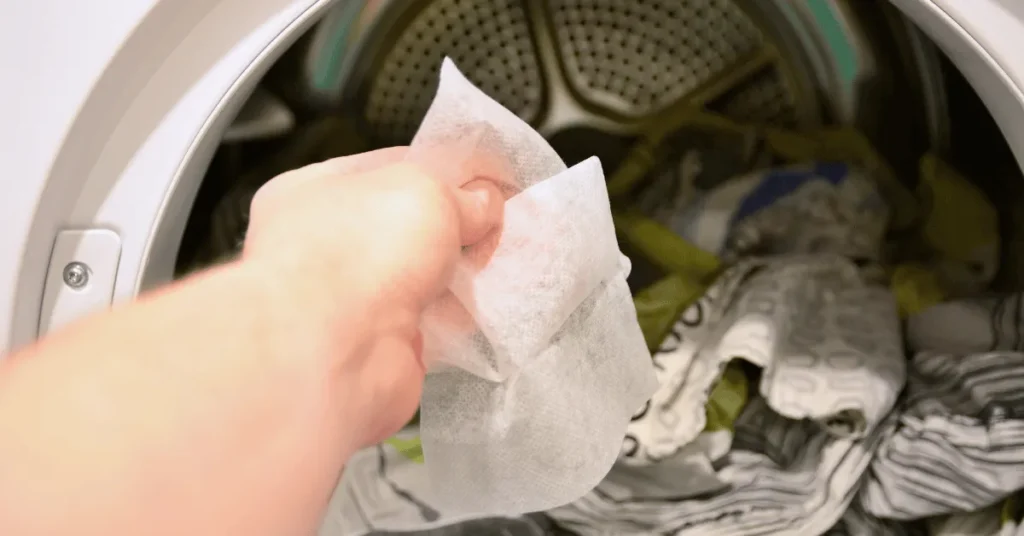
If your dryer overheats, it’s important to stop using it immediately and investigate the cause. If you’re not sure what caused the overheating, it’s best to call a qualified technician to inspect the dryer.
Here are some tips to help prevent your dryer from overheating:
- Clean the lint trap after every use.
- Have the dryer vent cleaned regularly.
- Inspect the heating element and thermostat for signs of damage.
- Use the dryer’s moisture sensor setting to help prevent overdrying.
- Don’t overload the dryer.
- Avoid using dryer sheets.
By following these tips, you can help prevent your dryer from overheating and keep your clothes safe.
Big Tip For You
Preventive Steps for an Efficient Dryer: Regular maintenance, proper loading, and attentive troubleshooting are your allies in preventing dryer overheating. From cleaning lint filters to ensuring proper ventilation, taking these steps can extend your dryer’s lifespan and keep it running smoothly. Don’t overlook the small details—it’s the key to hassle-free laundry days!
Why would a dryer suddenly stop working?
If you’ve ever experienced the frustration of a suddenly non-functional dryer, you’re not alone. A dryer that halts its operation unexpectedly can disrupt your routine and leave you with a pile of damp laundry.
Understanding the reasons behind this abrupt stoppage can help you prevent such inconveniences in the future.
In this article section, we’ll delve into the possible culprits behind a dryer’s sudden breakdown and provide insights on troubleshooting and potential solutions.
Power Supply Issues:
One of the most common reasons for a dryer to stop working unexpectedly is power-related problems. These issues can stem from both the appliance’s internal components and external factors. A few key points to consider:
- Electrical Outages: Sudden power outages or fluctuations can cause your dryer to stop mid-cycle. This might be due to electrical grid issues or circuit breaker tripping.
- Faulty Power Cord or Outlet: A damaged power cord or faulty electrical outlet can interrupt the power supply to your dryer. Regularly inspect cords and outlets for signs of wear or damage.

Thermal Fuse Tripping:
Dryers are equipped with thermal fuses to prevent overheating and potential fires. If your dryer’s internal temperature rises too high, the thermal fuse can trip, shutting down the machine to ensure safety. This can be triggered by:
- Restricted Airflow: Clogged vents or lint filters can impede proper airflow, causing the dryer to overheat and the thermal fuse to trip.
- Overloading: Overloading the dryer with too many clothes can obstruct airflow, leading to overheating and tripping the thermal fuse.
Malfunctioning Components:
Various components within the dryer can malfunction, resulting in sudden stoppages. These may include:
- Faulty Thermostat: A malfunctioning thermostat can disrupt the temperature regulation in the dryer, causing it to shut down unexpectedly.
- Broken Belt: The dryer’s belt plays a crucial role in rotating the drum. If the belt snaps or becomes loose, the drum won’t turn, and the dryer will stop functioning.
Inadequate Ventilation:
Proper ventilation is vital for a dryer’s efficiency and safety. A lack of ventilation can lead to overheating and system shutdown:
- Clogged Vents: Blocked or clogged vents prevent proper airflow, causing the dryer to overheat and potentially shut down.
Sensor Malfunctions:
Modern dryers often come with sensors that detect moisture levels and adjust drying times accordingly. Sensor malfunctions can lead to sudden stops:
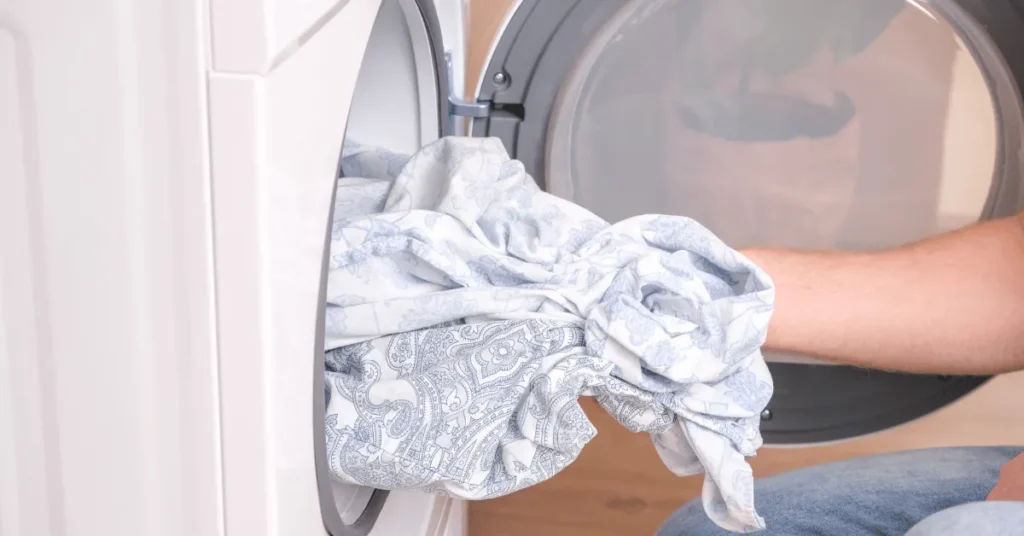
- Moisture Sensor Issues: If the moisture sensor malfunctions, the dryer might inaccurately detect the moisture level, leading to premature shutdowns.
A dryer that suddenly stops working can be a source of frustration, but by understanding the potential reasons behind such stoppages, you can take preventive measures.
Regular maintenance, proper loading, and addressing issues promptly can contribute to a smoother and more reliable drying experience.
If the problem persists or you’re unsure about troubleshooting, seeking professional assistance can help diagnose and resolve the underlying issues.
How do I know if my dryer is overheating?
As a diligent appliance owner, it’s crucial to be aware of signs that indicate your dryer might be overheating.
Identifying these warning signals early can prevent potential damage, extend the lifespan of your dryer, and ensure the safety of your home.
In this article section, we’ll explore the subtle cues and clear indicators that can help you determine whether your dryer is running hotter than it should be.
Subtle Clues:
- Increased Heat Output: If you notice that your dryer is emitting an excessive amount of heat during operation, it could be a sign of overheating. The appliance may feel much hotter to the touch than usual.
- Prolonged Drying Times: Clothes taking significantly longer to dry than they used to can indicate poor airflow due to overheating. This extended drying period can be a result of the dryer struggling to maintain optimal temperatures.

Visual Indicators:
- Burning Smell: If you detect a burning odor while your dryer is running, it’s a clear red flag of overheating. This smell could be due to components or lint inside the dryer getting too hot.
- Hot Exterior: Touch the exterior of your dryer while it’s operating. If it feels exceptionally hot to the touch, there’s a possibility that the appliance is overheating.
Performance Issues:
- Clothes Damage: Overheating can result in clothes getting scorched, discolored, or damaged during the drying cycle. Keep an eye out for such signs on your garments.
- Automatic Shutoff: Many modern dryers are equipped with safety mechanisms that automatically shut down the appliance if the temperature becomes dangerously high. If your dryer frequently stops during a cycle, overheating might be the cause.
Preventive Steps:
- Clean Lint Filters and Vents: Regularly cleaning lint filters and ensuring that vents are free from blockages can help maintain proper airflow, reducing the risk of overheating.
- Avoid Overloading: Overloading the dryer restricts airflow, making it work harder to dry clothes. This can lead to overheating. Follow manufacturer guidelines for load size.
Professional Assistance:
If you suspect your dryer is overheating despite taking preventive measures, it’s advisable to seek professional help. A trained technician can diagnose the issue accurately and recommend appropriate solutions.
Recognizing the signs of a potentially overheating dryer is crucial for the safety of your appliance and your home.
By paying attention to subtle clues, visual indicators, and performance issues, you can take timely action to prevent further damage and ensure efficient dryer operation.
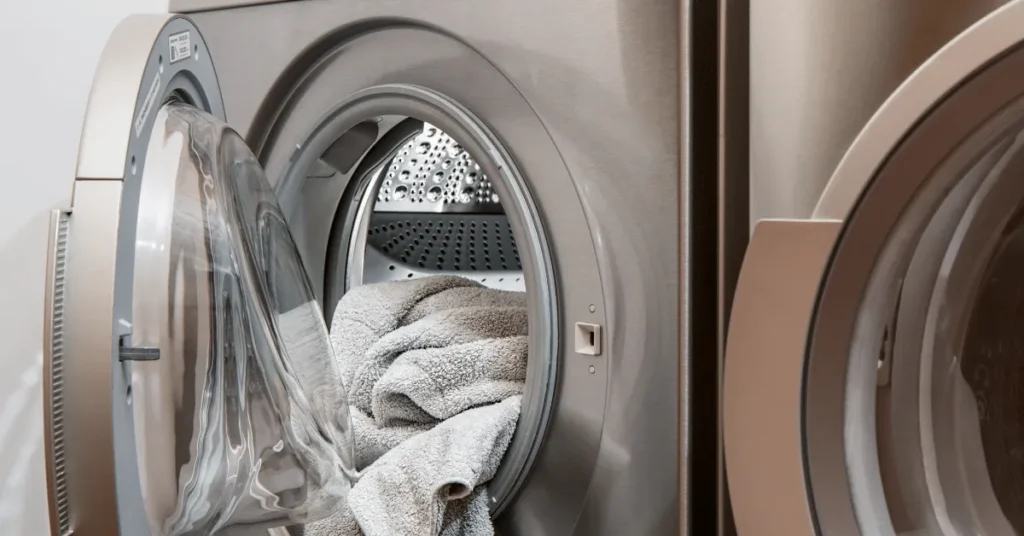
Regular maintenance and cautious operation are key to keeping your dryer running smoothly and extending its lifespan.
How you can stop your dryer from overheating in the future?
Maintaining your dryer’s optimal performance and preventing overheating is crucial for the longevity of the appliance and the safety of your home.
By implementing a few simple practices, you can ensure that your dryer operates efficiently without the risk of overheating.
In this article section, we’ll explore proactive steps and best practices to keep your dryer running smoothly and prevent potential issues down the line.
Regular Maintenance:
- Clean Lint Filters: Regularly clean the lint filter before or after each drying cycle. Accumulated lint can restrict airflow and lead to overheating.
- Inspect Ventilation: Check the dryer’s ventilation system, including the vent hose and outdoor exhaust vent. Clear any obstructions to ensure proper airflow.
Proper Loading:
- Follow Capacity Guidelines: Avoid overloading your dryer beyond its recommended capacity. Overloading can hinder airflow and cause the dryer to work harder, potentially leading to overheating.
- Separate Heavy and Light Items: Separate heavy fabrics from lighter ones to ensure balanced loads. This promotes efficient drying and prevents strain on the dryer’s heating elements.

Optimal Placement:
- Ventilation Space: Place your dryer in a well-ventilated area with sufficient space around it. This allows for proper air circulation and prevents overheating due to inadequate ventilation.
- Level Surface: Ensure that the dryer is placed on a level surface. An uneven surface can cause the appliance to work harder, increasing the risk of overheating.
Routine Inspections:
- Check for Damage: Periodically inspect the power cord, plug, and outlet for any signs of wear or damage. Damaged cords or outlets can lead to electrical issues and potential overheating.
- Monitor Ventilation: Regularly examine the vent hose and exhaust vent for debris or blockages. Keeping these components clear prevents airflow restrictions that can result in overheating.
Proactive Troubleshooting:
- Unusual Noises or Odors: If you notice unusual noises or burning odors while using the dryer, stop the cycle and investigate. Addressing such issues promptly can prevent further damage and overheating.
- Timely Repairs: If you suspect a malfunction, have your dryer inspected and repaired by a professional. Ignoring minor issues can lead to major problems, including overheating.
Important FAQs
Can a dryer overheat and become a safety hazard?
Why does my dryer emit a burning smell during the operation?
How can I prevent my dryer from overheating in the future?
Can a faulty power cord or outlet cause my dryer to stop working suddenly?
What should I do if my dryer doesn’t turn back on after overheating?
Can clogged dryer vents cause overheating and stoppage?
How do I know if my dryer’s thermostat is malfunctioning?
Are there any visual indicators of an overheating dryer?
Final Thoughts
A malfunctioning dryer can disrupt your daily routine and leave you with damp clothes. Understanding the potential reasons behind unexpected stoppages is essential for prevention.
Whether it’s power supply issues, thermal fuse tripping, inadequate ventilation, or sensor malfunctions, each problem has a solution.
Regular maintenance, attentive troubleshooting, and seeking professional assistance, when needed, can keep your dryer running smoothly.
Remember, addressing minor issues promptly can prevent major problems down the line.
By implementing these measures, you can enjoy a reliable and efficient dryer, minimizing inconveniences and ensuring the safety of your home.
Stay vigilant, take preventive steps, and maintain your dryer for a hassle-free laundry experience.
Want to Watch a Video?
Read More:
- Best Features of a Laptop
- Best reading light to not disturb the partner
- Best convection microwave oven
- Automatic yogurt maker machine
Images by: Canva.com
How to Trust a Website? (Updated in 2023)
“Navigating the web safely in 2023? 🌐 Discover our updated guide on how to trust websites. Stay secure online – read it now!”




